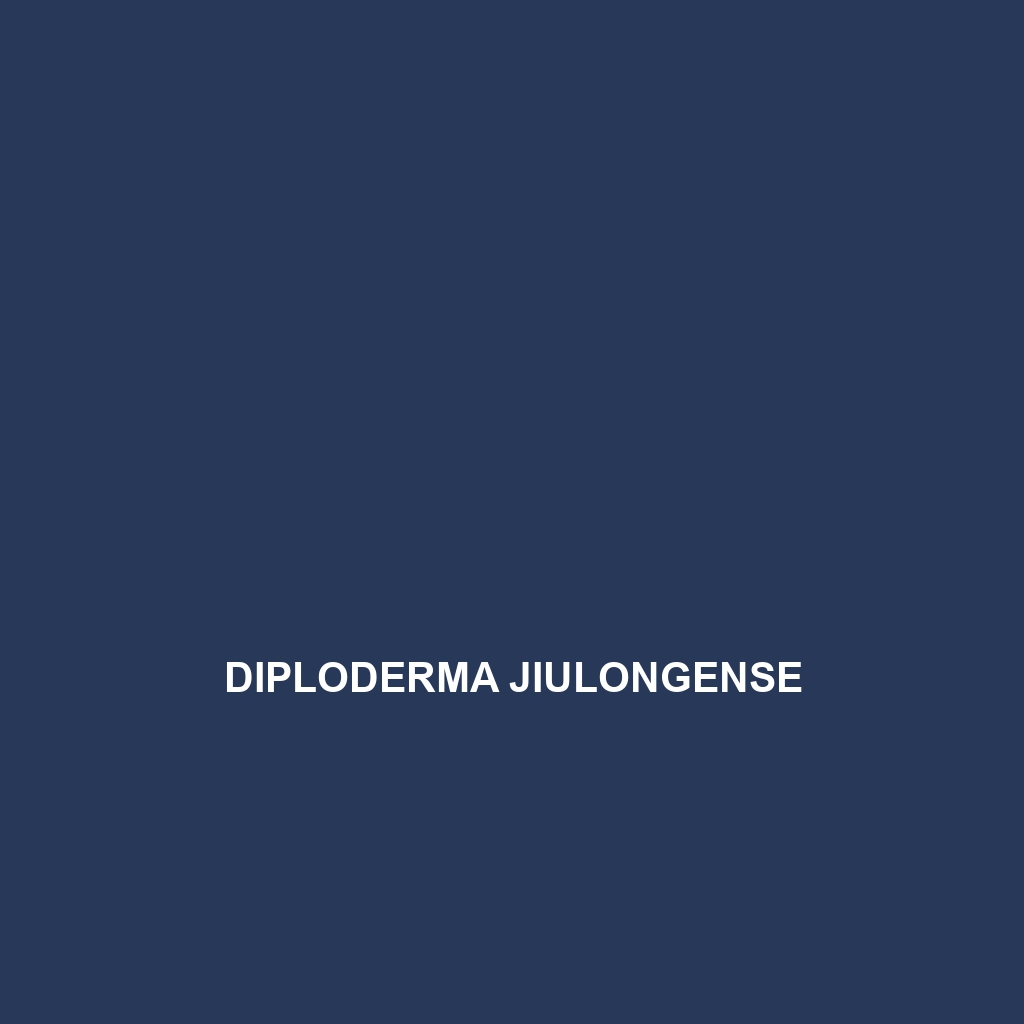Species Description: Diploderma jiulongense
Common Name: Diploderma jiulongense
Scientific Name: Diploderma jiulongense
Habitat
Diploderma jiulongense is primarily found in the mountainous regions of southeastern China, particularly in the Jiulong area of Fujian Province. This lizard thrives in subtropical forests, favoring humid, shaded environments such as dense undergrowth and mossy rocks. The species is primarily located at elevations ranging from 1,200 to 1,800 meters, where the climate provides the necessary temperature and humidity conducive to its lifestyle.
Physical Characteristics
This species typically measures between 15 to 25 centimeters in length. Diploderma jiulongense exhibits a distinctive coloration, ranging from dark brown to olive green, often featuring intricate patterns that provide excellent camouflage against the forest floor. Its unique shape includes a slender body, short limbs, and a long tail, which can be used effectively for balance. Notably, its skin has a rough texture, adorned with small spines that offer added protection from predators.
Behavior
Diploderma jiulongense is primarily arboreal, often found perched on branches where it displays a range of interesting behaviors. During the day, it is typically active, hunting for food and basking in the sun to regulate its body temperature. Its elusive nature and quick movements make it a challenge to spot in the wild, contributing to its fascinating behavior as it relies on stealth to evade potential threats.
Diet
This species is insectivorous, with a diet predominantly consisting of various arthropods such as crickets, beetles, and caterpillars. Diploderma jiulongense employs a sit-and-wait strategy to capture its prey, blending into its surroundings until an unsuspecting insect comes within range. This feeding habit is vital for maintaining the ecological balance in its habitat.
Reproduction
Diploderma jiulongense typically breeds during the warmer months, particularly from May to August. The female lays clutches of 2-4 eggs, which she buries in moist soil or leaf litter to protect them from predators and environmental extremes. After an incubation period of approximately 60 days, the hatchlings emerge, ready to fend for themselves in the wild. Parental care is minimal post-hatching, emphasizing the species’ independent nature.
Conservation Status
The current conservation status of Diploderma jiulongense is classified as vulnerable according to the IUCN Red List. The primary threats to its survival include habitat loss due to deforestation and urban expansion, alongside climate change affecting its montane habitat. Conservation efforts are essential to safeguard its natural environment and ensure the species’ survival.
Interesting Facts
Diploderma jiulongense showcases fascinating characteristics, such as its remarkable ability to change color slightly in response to environmental changes—a trait that aids in camouflage. This species is also known to exhibit territorial behavior, with males engaging in displays to ward off rivals during the breeding season.
Role in Ecosystem
As a key predator of insects, Diploderma jiulongense plays a significant role in controlling arthropod populations within its forest habitat. This lizard also serves as prey for larger predators, thus contributing to the food web dynamics. Its presence indicates a healthy ecosystem, underscoring the importance of preserving the mountainous forests where it resides.
